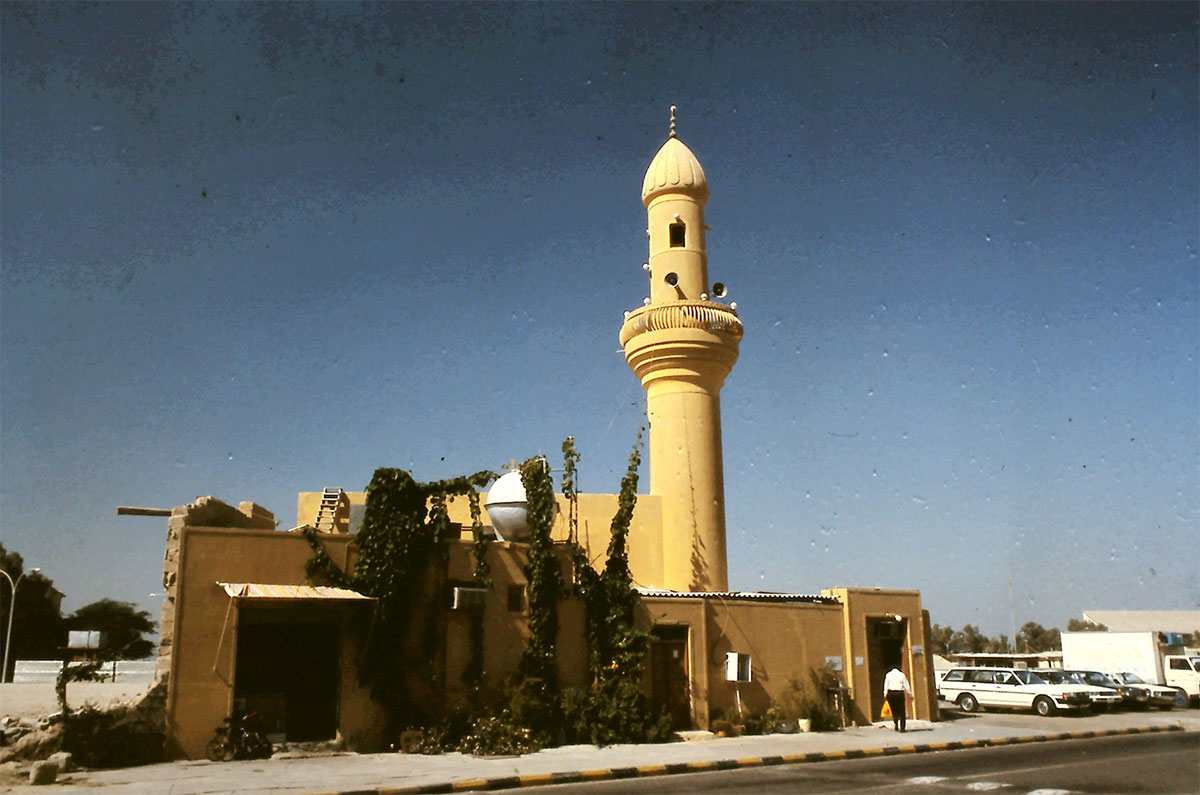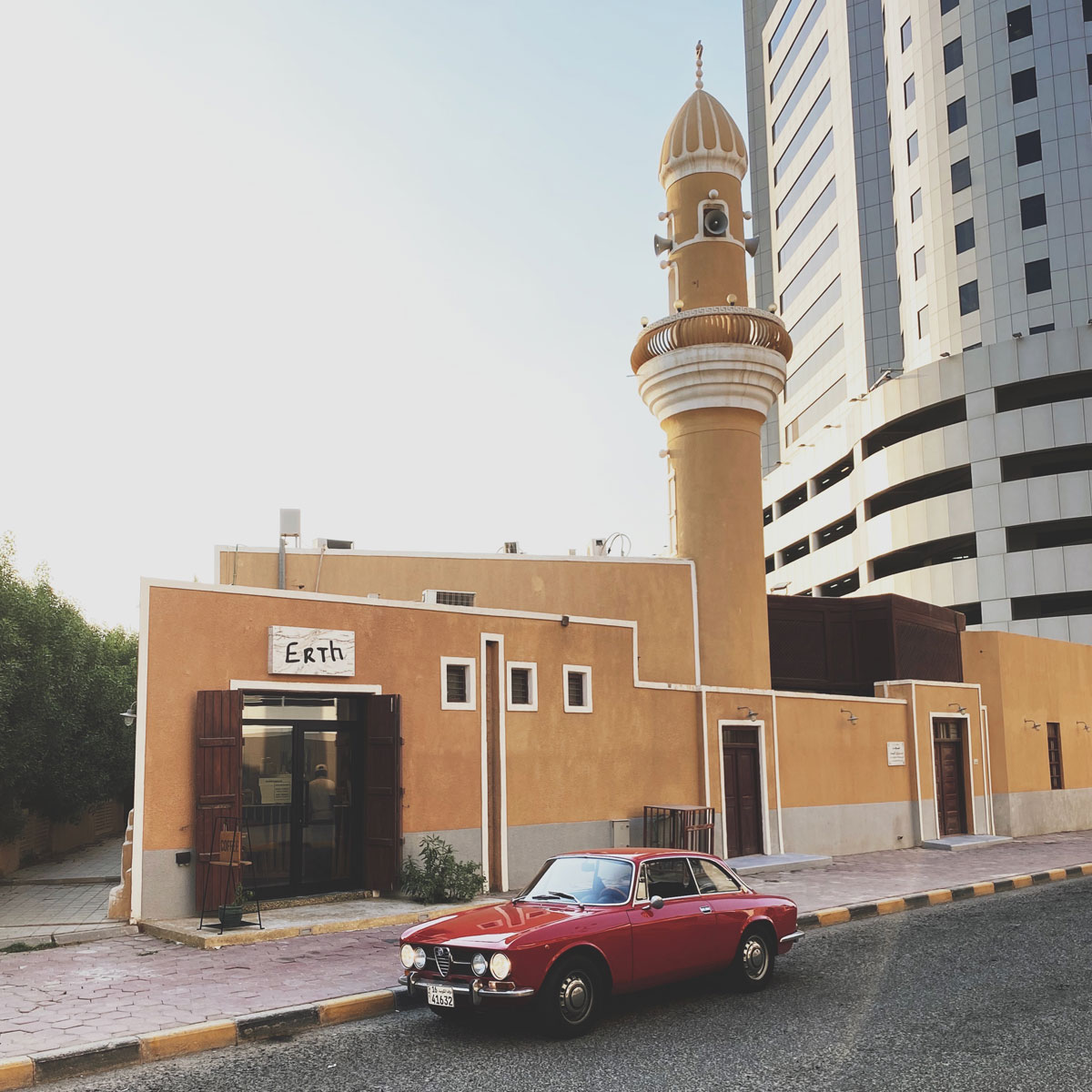
I found a great collection of photos of different mosques around Kuwait taken back in 1985 by Taiwanese photographer, Tom Chu. I found these photos accidentally while I was looking for information on Contax cameras in Kuwait. All these photos are in a photo album on Flickr and were taken with a Contax 139 fitted with a Zeiss Distagon 28mm/f2 lens. Link to photos
What I think I like the most about old photos of Kuwait is how Kuwait didn’t look overcrowded. There was always empty space which we lack nowadays.

Also, the beautiful old mosque at the top of this post is still around today. It’s where Erth Cafe is located in Kuwait City. Google Maps

14 replies on “Mosques in Kuwait – 1985”
Beautiful post!
Side note- Is it just me or does anyone find it off that a masjid has a cafe part of it?
If you look at the old photo the mosque always had a shop there.
I think it looks cool and adds a mixed use element to it (pls don’t deport me)
I’m more curious to who the shop pays rent for?
the land*lord*
I grew up in Kuwait (Kuwait City). If I am not mistaken, the shop on the left of the mosque was a cycle repair shop and the shop was close to the still standing, Kharafi residential complex. I used to frequent the shop often as I needed to have my tyre tubes replaced or do some other maintenance on my bicycle.
These mosques are super interesting as they serve as one of the last remnants of the old city. Because in Islam you can’t demolish a mosque (unless you intend on rebuilding it) they had no choice but to leave them be during the urban development in the 50’s.
In my own observations I’ve also found a few of these mosques can be found in the middle of an empty dust patch, seemingly randomly placed – away from roads and stuff. But if you overlay images of the old city with the current map you’ll find that they used to be surrounded by dense vibrant communities that are now long gone. So now they stand in solitude.
I think the Kuwait City mosques serve as a great opportunity for researchers to create an accurate reconstruction of the old city as a whole, using them as a foundational basis which we can still tangibly appreciate now.
Thanks for sharing it Mark!
There is this mosque in the city which they kept but had demolished the old town around it
https://goo.gl/maps/mZdCvDZJWwcqTee27
if you look through the photos you’ll find this picture which shows you how they saved it during construction
https://goo.gl/maps/1ZkLVcP5hzwZVrAd7
A couple of other old mosques in that same block as well still surviving.
https://goo.gl/maps/S9ZUe9CLmx58B7mz7
https://goo.gl/maps/j9neYd72gSEA1bDc7
The only things still left from the old neighborhood there. So glad they can’t demolish mosques or else they would have been lost like the whole area around them. So sad.
Now I’m upset because I remembered how the area used to look like before it was demolished. I don’t understand how some people are ok with just demolishing old historical buildings to replace them with new fake ones that look like old ones. Then to top it off the project has been dead for over a decade and nobody seems to care!
I thought the same thing when reading the Kuwait Urbanisation, reading George Shiber describing the demolitions as they were happening is…depressing.
I wouldn’t completely unfound the view they were coming from at the time when they decided to do it though. Pre-oil history is largely romanticised, and we forget how horrible it really was to live in the conditions of those times. I guess people were enthusiastic to leave it behind them completely and look toward the brighter future ahead.
That’s not to say I agree with it at all, but it’s a bit more understandable when looking at it from that angle I guess? Even then though, preserving these buildings would’ve served as a good reminder of how far we’ve come – and it might’ve helped tackle the alienation Kuwaitis of my generation feel towards that time – and the country as a whole.
Well the buildings I’m talking about (or the area) got demolished recently like within the past 20 years. They demolished the old neighborhood to build a new one that looks like the old one. That project has been on hold for like 10 years.
Construction in this area is on hold for three reasons: The company that worked on this fake cultural village went belly up in 2008 due to the financial crisis. Also, Kuwait University and the NCCAL archeology teams have discovered the basis and foundations of 19th century mud houses there along with the foundation of the second wall that encircled Kuwait City. In addition, one landlord filed a lawsuit against the municipality over a plot in that particular neighborhood.